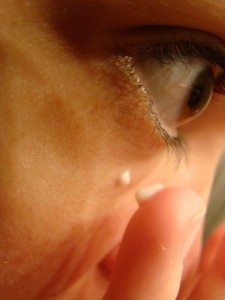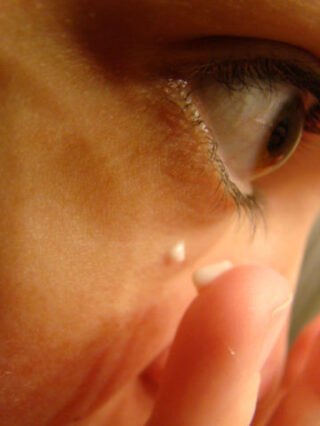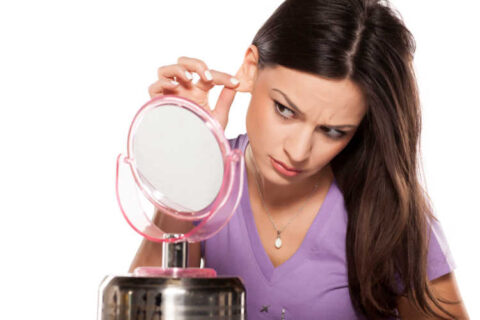 Who doesn’t want more youthful, glowing skin?
Who doesn’t want more youthful, glowing skin?
But with hundreds of products on the market, it’s hard to know just what’s in all of those little bottles and which ones work best.
If you’re confused by the fancy jargon but eager to restore your youthful glow, there are some very specific ingredients that you should be looking for.
The Importance Of Collagen
Collagen is a fibrous protein that provides our skin with strength and flexibility.
As we age, Collagen declines and causes our skin to wrinkle and sag.
To prevent these signs of aging and retain our youthful appearance, we must find new ways to stimulate production.
In addition, things like sunlight, air pollution, alcohol, and cigarette smoke can damage your skin by producing harmful free radicals. If left untreated, these harmful byproducts cause cellular damage and increase Collagen loss — leading to wrinkles and other signs of aging.
Following are the 5 best anti-aging ingredients that can help to restore your skin’s Collagen levels and protect against Free Radicals…
#1 – Antioxidants
Studies show that Antioxidant Vitamins A, C, and E protect against damage from Free Radicals and help strengthen blood vessels by penetrating the skin’s outer layer.
Look for sunscreens and moisture lotions enhanced with Antioxidant Vitamins, or Anthocyanin – a powerful skin protectant derived from plant pigments.
Here are the 5 best skin antioxidants with anti-aging properties.
#2 – Glycolic Acid
Alpha-Hydroxy Acids (AHA’s) peel away the dead cells that sit along the surface of the skin.
Glycolic Acid, made from cane sugar, is considered the most effective in this family of ‘fruit acids’.
It works by penetrating the damaged layers of the skin and helps newer skin to emerge. The result is a mild to moderate peeling process that creates a smoother and more youthful appearance.
More About Alpha-Hydroxy Acids – Other names: glycolic acid – from sugar cane, lactic acid -from dairy products or honey , tartaric acid or pyruvic acid – from grapes, malic acid- from fruit, citric acid from citrus fruits, kojic acid from mushrooms. Percentages: home care: 1-5%mild-medium, 5-15%medium-strong, it is best to start your skin slowly with a lower percentages. (15%-70% clinical strength-recommended 1-4x a month) Results you get:clearer skin, less acne, less pigment, smaller pores, firmer collagen and elastin growth, scar reductio, increase in spf by 2-4, deeper product penetration with a breakdown of the skins natural barrier, fast skin cell turn over more like it was when you were a baby, the faster your skin cells shed the younger you look, with more new cells are on the surface making your skin glow! When studied fruit acids work best as a mixture each one works differently. Choose a 2-4 acid blend for the best results! (example: glycolic, lactic, malic & kojic) also get kojic or pigment fighting acids in everything this will combat melanin which makes uneven skin tone & age spots. Source
#3 – Niacinamide
Our skin cells contain natural lubricants called Ceramides. As we age, these natural emollients diminish, and we need to find new ways to restore moisture.
Niacinamide, a form of Vitamin B3, appears to be highly effective in stimulating skin circulation and preventing water loss.
Niacinamide also appears to offer antioxidant benefit, guarding against the harmful effects of UV sunlight.
Research conducted by Proctor and Gamble concluded that a 5% Niacinamide cream improved the appearance of wrinkles, evened skin tone, and increased skin elasticity after 12 weeks.
More About Niacinamide – Other names: 3-Pyridine Carboxamide, 3-Pyridinecarboxylic Acid, Acide Nicotinique, Anti-Blacktongue Factor, Antipellagra Factor, B Complex Vitamin, Niacina y Niacinamida, Niacine, Niacinamide, Nicamid, Nicosedine, Nicotinamide, Nicotinic Acid, Nicotinic Acid Amide, Nicotylamidum, Pellagra Preventing Factor, Vitamin B3, Vitamin PP, Vitamina B3, Vitamine B3. Source
#4 – Retinol
Exfoliation removes dead cells from the skin’s surface. Retinol, a potent form of Vitamin A, is a popular exfoliant that penetrates deeply into the skin. It speeds cell turnover, reduces fine lines, and evens skin color.
A study reported in Skin Pharmacology and Physiology concluded that lotions and creams containing 0.1 % Retinol (found in over-the-counter products) improved skin tone and fine lines after 12 weeks of use, without significant side effects.
My personal favorite is ROC Retinol Correction Cream. For the past 2 years, I’ve used it religiously.
#5 – Peptides
The most popular cosmetic Peptide is called Palmitoyl Penapeptide. It actually signals the skin to produce more Collagen, thus reducing fine lines. You’ll find it in Strivectin creams and many other over-the-counter anti-aging products.
Copper Peptides are another derivative known to promote more youthful skin. Copper is a powerful antioxidant long prized for its ability to heal wounds. Because it can penetrate below the skin’s protective barriers, it also stimulates Collagen production and improves skin texture.
More About Peptides – Other names: ARGIRELINE (Acetyl Hexapeptide) – is a wrinkle inhibitor reduces pre-existing wrinkle depth and relax facial tension. LEUPHASYL (Pentapeptide-3) – Compliments Argireline by modulating muscle contraction, reduces depth of wrinkles around the eye and forehead areas. OCTAPEPTIDE (Acetyl Glutamyl Heptapeptide-1) – Extends and lengthens the muscle under tension reduces wrinkle depth. Matrixyl 3000 (Palmitoyl Oligopeptide & Palmitoyl Tetrapeptide-3) – Helps stimulate new Collagen I, III & IV and Elastin. TRIPEPTIDE (Diaminobutyroyl Benzylamide Diacetate) – temporarily relaxes the muscle, keeping it from contracting and thereby smoothing wrinkles, Copper Peptide. Percentages:5% or more, some over the counter formulas such as Olay Regenerist are low percentages of peptides don’t be fooled by a cheap price tag! Results you get: Peptides have been shown to reduce fine lines and wrinkles by 50-70% over 3 months of use. Muscle Toning & Collagen and Elastin growth. Source
https://youtu.be/5gKsOqlhA_c
More About Anti-Aging Ingredients
Anti-aging over-the-counter products include creams, lotions, and facial cleansers.
For the best visible results, some skin care experts suggest starting with products that contain a minimum of 8% to 10% AHA concentration. Once your skin becomes accustomed to mild peeling, then stronger formulas may be well-tolerated.
Though many over-the-counter products are milder in strength than prescription formulas, they can still fight the signs of aging. The key is to choose ingredients with a proven track record, and experiment to see which ones produce the best results for your skin type.
- Anti-Aging Ingredients You Want For Your Face
- Best Anti-Aging Ingredients For Your Skin
- Newest Anti-Aging Ingredients You Should Be Using
- 5 Anti-Aging Ingredients To Look Out For
- What To Look For In An Anti-Aging Product: Best Ingredients
- Best Ingredients In Wrinkle Creams
- Amazing Anti-Aging Ingredients That Really Work
I like to help people find clever ways to do things that will save time & money — so I write about "outside the box" Beauty Tips and Beauty Hacks that most people wouldn't think of. With beauty products (like hair care, skincare, and makeup) and personal care items (like teeth issues, body odor, undergarments, and <em>other</em> topics that very few people enjoy talking about)… I share my own honest firsthand experiences that I think others would appreciate hearing about and find helpful. Especially for topics that are usually very "private" and most people don't like to talk about publicly! When I'm not trying new beauty products and organizing all my "stuff", you'll find me at the corner of Good News & Fun Times as publisher of The Fun Times Guide (32 fun & helpful websites).









